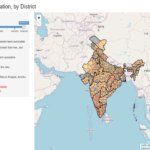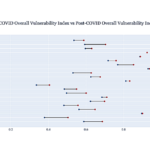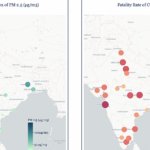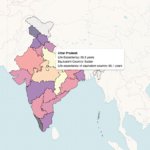Picture This: How badly has Covid affected Indian schools?
The coronavirus pandemic has not only taken a toll on people’s health globally, but it has also upended normal economic activity. Large economies across the world have suffered prolonged downturns as strict lockdown measures have been enforced to keep the spread of the disease in check. A major impact of these lockdown measures has been seen on the education system. Schools, colleges, and universities have had to shut regular classes and depend on e-learning methods to help students keep up with their education.
The picture above tells us about the status of school education in the times of Covid-19 across various countries. The picture is based on data from the Oxford Covid-19 Government Response Tracker [1] which records the impact of Covid-19 on school education across the world from January 1, 2020, till date. We find that schools in India were completely shut for 68 percent of the days. Schools in India have remained shut longer than most countries in its neighbourhood and other highly affected countries like United States, China, and United Kingdom.
In India’s neighbourhood, only Bangladesh at 88 percent had a higher percentage of days when schools were fully closed. In India, only 11 percent of the days saw schools open since January 1, 2021.
In Europe, countries like Belgium, and Switzerland saw minimal school shutdowns of just 3 percent and 9 percent respectively. In Switzerland, all schools were open 41 percent of the days.
The Oxford Tracker records closing of schools and universities across the world daily. Policy responses to closing of schools are categorized as ‘No Measures’ which means schools were open, ‘Recommend Closing’ which means all schools open with some alterations which results in significant differences compared to non-Covid operations, ‘Require closing’ which means some levels of schools were closed, and ‘Require closing all levels’ which means all schools were closed on that day.
The picture above reveals that India has not only been among the worst affected countries because of Covid-19 in terms of number of cases, deaths, or economic slowdown, it has also seen its students suffer more than other countries as schools and universities have remained shut for more than two-thirds of the period.
School closures take a disproportionate toll on women’s work. They increase the burden of childcare at home and lower women’s ability to participate in paid work. For children, time away from school has serious adverse implications on cognitive skills, socialization, and learning. In India, the sharp digital divide (highly unequal access to internet, smartphones or computers – devices that are needed for remote schooling) as well as inhospitable domestic environments (small homes, lack of privacy for children, poor or no access to electricity) means that prolonged school closures would have especially deleterious effects for children from disadvantaged socio-economic backgrounds.
[1] Maintained by Blavatnik School of Government, University of Oxford
If you wish to republish this article or use an extract or chart, please read CEDA’s republishing guidelines.







